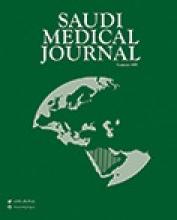Abstract
Infectious endocarditis is a potentially lethal inflammation of the hearts' inner lining invaded by microorganisms. The mortality from this illness increases as the number of infective organisms rises to 2, due to involvement of the left side of the heart. These microorganisms usually arise from the patient's own flora but can be acquired from the environment. Fever and heart murmurs are the principal clinical manifestations followed by a plethora of peripheral signs due to dissemination of microorganisms via the bloodstream. Echocardiographic imaging and sensitive culture techniques form the cornerstone of diagnosis. We report a patient with rheumatic heart disease who had combined brucella melitensis and streptococcus viridans endocarditis complicated by heart failure and an aortic root abscess. He was diagnosed on the basis of a history of prolonged fever and occupational risk as a shepherd, the presence of heart murmurs, positive blood cultures and echocardiographic evidence of aortic vegetations. He had an excellent response to intravenous antibiotic therapy combined with aortic valve replacement, which nowadays is regarded as the safest therapeutic approach for aortic valve endocarditis.
- Copyright: © Saudi Medical Journal
This is an open-access article distributed under the terms of the Creative Commons Attribution-Noncommercial-Share Alike 3.0 Unported, which permits unrestricted use, distribution, and reproduction in any medium, provided the original work is properly cited.






